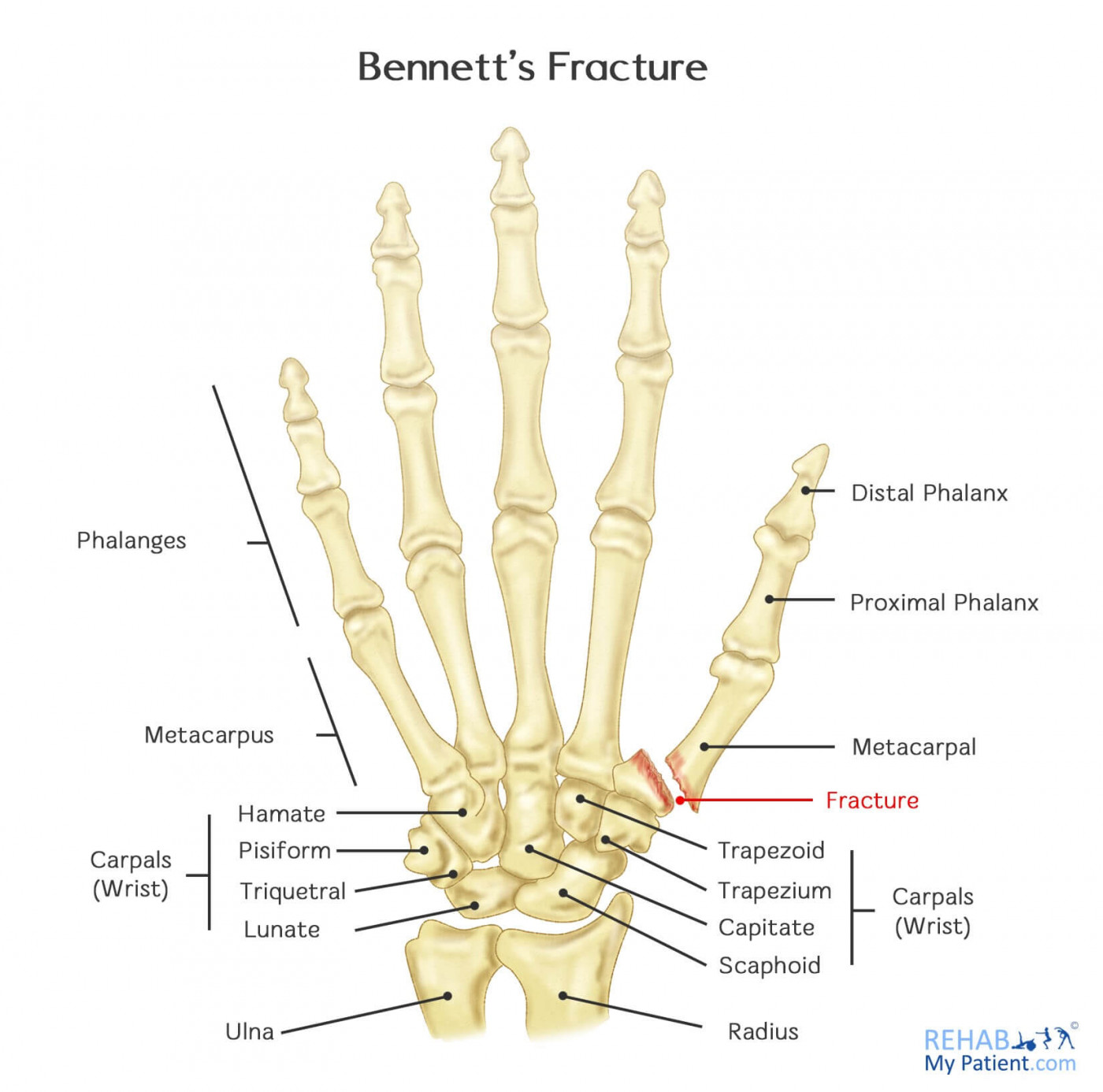
Two common fractures occur at the thumb's base, one of which is called Bennett's Fracture. The fracture is quite worrisome because the broken bone involves the joint located between the wrist and the thumb. If left untreated, these injuries could end up causing problems with your thumb for the long-term.
Unless the fracture is recognized and treated properly, the fracture could end up causing an arthritic joint that is unstable with a reduction of movement range and an increase in pain. Since the thumb joint is critical in opposition and pinch, Bennett’s fracture can severely minimize function.
Bennett’s fracture is often the direct result of a fall onto the thumb or taking a direct blow to the thumb, such as that of a fist fight or a punch.
Bennett's Fracture Anatomy
The fractured bone, also known as the first metacarpal, is the one where you will begin feeling the pain. You will notice immediate swelling around the wrist and thumb. The fracture encompasses the lower portion of the bone and extends up and into the joint. Smaller fracture fragments will stay adhered to the bones in the wrist. Larger fragments are displaced in the same manner as the entire thumb.

How to Treat Bennett's Fracture:
- Medical Therapy
Closed reduction along with a thumb cast immobilization is quite effective in treating Bennett's fractures if the reduction is able to be maintained. The closed technique consists of a thumb traction that combines with metacarpal pronation, abduction and extension. Direct pressure is applied to the metacarpal base. Due to the strong pull, displacement often occurs with percutaneous pinning.
- Surgery
Maintaining thumb abduction is imperative to preserving the amount of space in the hand. Success was reported with the open tension wiring as a means of fixation for treating the disease. Generally surgery is used in cases of non-union (i.e. the bones do not join together) or the fracture is complicated (e.g. there is dislocation or displacement of the bone).
Tips:
- The tendon can pull the entire thumb out of joint, which in turn, causes an extreme force to transmit to the base of the thumb and to the wrist. Anytime there is an extreme pain felt with the muscles and joints around the thumb area, it needs to be examined by a trained professional.
- If there is no dislocation that occurred, you might not need to have surgery to repair the injury. An inspection of the site will allow the professional to determine what needs to be done to the injury site.
- If a fracture is suspected, the only way to tell for sure is to have an x-ray to differentiate between a sprain and a fracture. Sprains can heal on their own, while often a fracture cannot. By examining the bone (usually with an X-ray), a proper treatment plan can be developed for the injured region.
- When surgery is required to treat the problem, expect to spend six to eight weeks in the recovery process before returning to normal. You need to allow your body time to heal and recover from the ordeal, so taking it slow is the best alternative. You will also have difficulty using your hand to type on a computer.
- Returning to contact sports and high-energy sports takes quite some time before having complete range of movement. Being able to completely move and do all of the things you once did takes time and patience.
- Following Bennett’s fracture, use ice every day by placing a pack of frozen peas wrapped in a tea towel over the thumb and wrist to reduce inflammation. 5-10 minutes of ice, up to 5 times per day is ideal.
Sign Up
Sign up for your free trial now!
Get started with Rehab My Patient today and revolutionize your exercise prescription process for effective rehabilitation.
Start Your 14-Day Free Trial